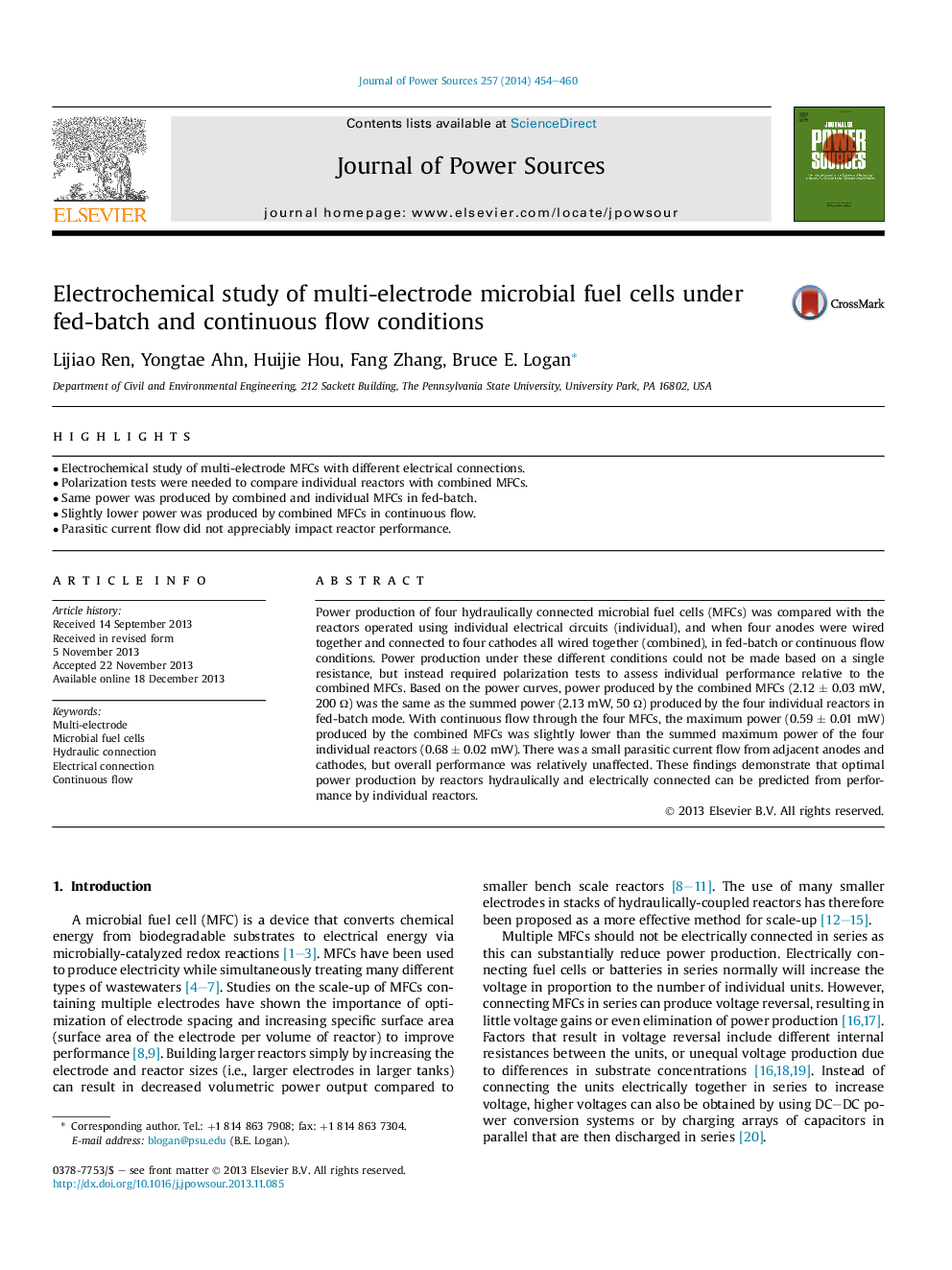| Article ID | Journal | Published Year | Pages | File Type |
|---|---|---|---|---|
| 7736944 | Journal of Power Sources | 2014 | 7 Pages |
Abstract
Power production of four hydraulically connected microbial fuel cells (MFCs) was compared with the reactors operated using individual electrical circuits (individual), and when four anodes were wired together and connected to four cathodes all wired together (combined), in fed-batch or continuous flow conditions. Power production under these different conditions could not be made based on a single resistance, but instead required polarization tests to assess individual performance relative to the combined MFCs. Based on the power curves, power produced by the combined MFCs (2.12 ± 0.03 mW, 200 Ω) was the same as the summed power (2.13 mW, 50 Ω) produced by the four individual reactors in fed-batch mode. With continuous flow through the four MFCs, the maximum power (0.59 ± 0.01 mW) produced by the combined MFCs was slightly lower than the summed maximum power of the four individual reactors (0.68 ± 0.02 mW). There was a small parasitic current flow from adjacent anodes and cathodes, but overall performance was relatively unaffected. These findings demonstrate that optimal power production by reactors hydraulically and electrically connected can be predicted from performance by individual reactors.
Keywords
Related Topics
Physical Sciences and Engineering
Chemistry
Electrochemistry
Authors
Lijiao Ren, Yongtae Ahn, Huijie Hou, Fang Zhang, Bruce E. Logan,
